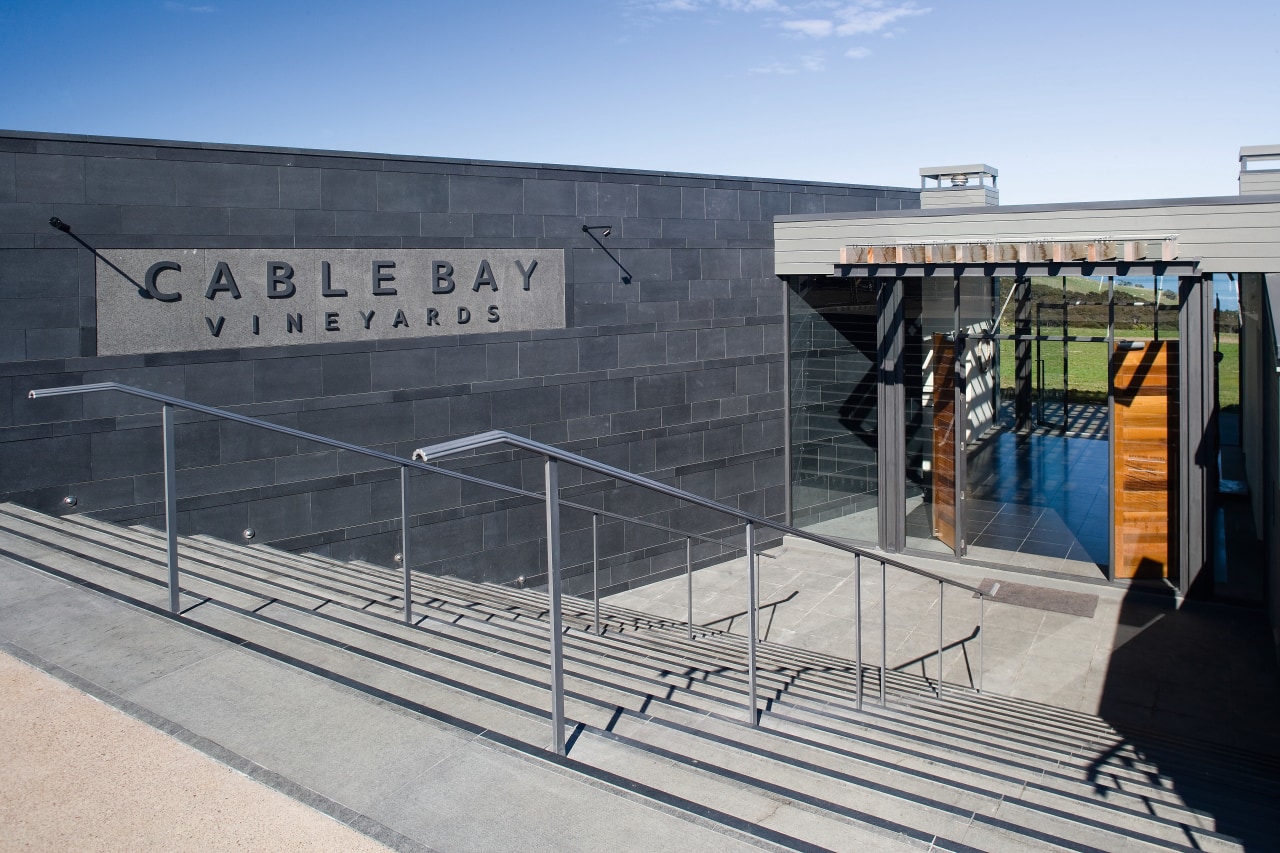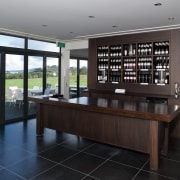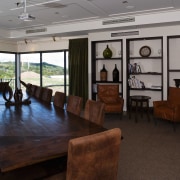LIE OF THE LAND
Wineries tend to protect their viticultural secrets from the masses. Cable Bay Vineyards have captured this mystique with a building that hides in a hillside

Chilled out formality might seem like an oxymoron but mix Auckland's Waiheke Island with a winery and this what you get a toned down, dressed up location.
When working on this project for Cable Bay Vineyards, the beauty and unassuming nature of the island caused Charlie Nott of C Nott Architects to rethink existing winery concepts. He realised the need for the environment to take priority.
"What we basically had was a hill, with views right over the water. The building needed to be sensitive to what was already an outstanding landscape," he says.
The resulting structure is long and low-lying. Without breaking the line of the hill on which it sits, the building merges with the landscape. It isn't visible from the road, which also lends to the sense of mystery often enjoyed by the wine trade.
The brief for this design called for a multi-use facility. Owner Neil Culley wanted a building to showcase and produce Cable Bay's award-winning wines, a cellar, a tasting room, a restaurant, an events venue, a wine library and a bar.
Each of these areas needed to fit together into a single design concept and while vineyards are often considered places for the elite, the unpretentious vibe of Waiheke had to show through.
"This is still a vineyard and a restaurant, so no shorts and jandals, but it's not black tie either. I wanted people to be comfortable engaging with it and moving through, but it's not a public bar," says Nott.
The entranceway was created with this idea in mind. Travelling down a set of stairs into the wide gallery creates a feeling of dramatic arrival; this is reiterated by immediate views out to the water. Materials used lend a more relaxed Pacific feel. Limestone and terracotta, the staples of European-style vineyards, are replaced by timber and stone, with glazing to take full advantage of the natural light. Exterior weather-boards recall traditional New Zealand building materials, and their grey-green tone blending with the natural surroundings.
Bluestone was chosen for a substantial wall that seems to cut into the hillside, the stone relating to New Zealand's colonial history. Cedar slats overhead in the central gallery recall traditional Pacific sheltering. Timber is not highly finished and colours are low key and in natural shades. Carpet is used to lend a sense of domesticity.
Apart from creating an iconic building for the Cable Bay brand, the vineyard headquarters needed to be functional and flexible.

"If the restaurant is full, there has to be space to accommodate a party looking for wine tastings. And it should work as a winery. There must be a touch of the romantic as well as functionality for what is, in reality, a production house," says Nott.
From the gallery hallway, there is a logical approach to the arrangement of different areas. It was a requirement that the restaurant act independently, due to the need for late opening hours, so it is placed beside the entrance. The kitchen is accessible from outside in order to allow for deliveries and staff to arrive unseen.
The building is elbow-shaped, with wine-making facilities screened from the hospitality side by an acute bend. While visitors can feel a part of the production of the wine through visiting the cellars, seeing the vines and reading up about viticulture in the library, they are not fully engaged with this side of the vineyard. This contributes again to that feeling of mystique.
The cellar also lends itself to this concept. Entry through a narrow and dark stairwell gives a feeling of entering a dungeon or cave, a place of secrecy. There is the illusion that the cellar is subterranean, even though in reality it is the ground floor of the facility, nestled into the hill. The library shares this space.
Credit list
Architect
Interior designer
Earthworks
Windows
Structural steel and handrails
Flooring
Ceiling
Bathroomware and plumbing
Fire
Architectural metalwork
Aluminium doors
Hardware installation
Mechanical services
Roller shutters and grilles
Drainage
Stonemason
Concrete cutting
Construction company
Civil Engineer
Roofing
Hardware
Blinds
Tiling
Paints and varnishes
Specialist joinery
Security system
Electrical
Suspended ceilings
Excavation and sitework
Hardware
Cranes
Aluminium windows
Glazing
Kitchens
Story by: Trendsideas
Home kitchen bathroom commercial design
9 tile shapes and finishes that think outside the square
Reflection and repose
Curves upon curves









